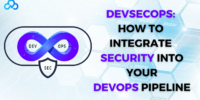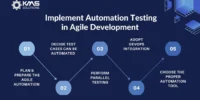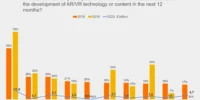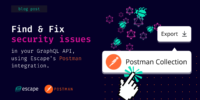Welcome to the dynamic world of GraphQL, where building APIs becomes an art of efficiency and flexibility. As developers, embracing GraphQL best practices is the key to creating powerful, responsive, and maintainable APIs. Join us on this journey as we explore quick tips to develop with GraphQL in a way that maximizes its potential and enhances your development experience.
Understanding GraphQL Fundamentals: Lay a Strong Foundation
Lay a strong foundation by understanding the fundamentals of GraphQL. Grasp the concepts of queries, mutations, and subscriptions. Comprehend the GraphQL schema, which serves as the contract between the client and the server. A solid understanding of the basics sets the stage for crafting effective APIs.
Efficient Query Design: Fetch Only What You Need ️
Optimize query design by fetching only what you need. GraphQL allows clients to specify the exact data they require, reducing over-fetching and improving performance. Encourage clients to be specific in their queries, ensuring that unnecessary data is not transmitted, and responses are tailored to the client’s requirements.
Schema Design Best Practices: Keep it Clean and Coherent ️
Keep your schema clean and coherent by adhering to design best practices. Define clear and consistent types, avoid unnecessary nesting, and leverage interfaces and unions for polymorphic relationships. A well-designed schema enhances clarity, maintainability, and ease of development.
Versioning Strategies: Plan for Evolution
Plan for evolution with effective versioning strategies. As your API evolves, consider how changes impact existing clients. Implement versioning strategies such as semantic versioning or introducing new fields without breaking existing queries. Ensuring backward compatibility is crucial for a smooth developer experience.
Performance Optimization: Balance Efficiency and Responsiveness ⚙️
Balance efficiency and responsiveness with performance optimization techniques. Implement caching, batching, and use the DataLoader library to optimize data fetching. Address N+1 query problems by fetching related data in a single query, reducing unnecessary database queries and improving overall API performance.
Security Considerations: Guard Against Vulnerabilities
Guard against vulnerabilities with careful attention to security considerations. Implement authentication and authorization mechanisms to control access to your GraphQL API. Validate and sanitize inputs to prevent common security threats such as SQL injection or malicious queries. Prioritize the security of both your API and the data it manages.
Error Handling: Provide Clear and Informative Responses ❌
Provide clear and informative error responses for effective error handling. Structure error responses consistently, and include relevant information, such as error codes and descriptions. Help developers troubleshoot issues quickly by offering actionable insights into what went wrong and how to address it.
Documentation Excellence: Empower Developers with Clarity
Empower developers with clarity through comprehensive documentation. Clearly document your GraphQL schema, including types, queries, mutations, and any additional directives. Include examples and explanations to guide developers in using your API effectively. Documentation is the key to fostering a positive developer experience.
Testing Strategies: Ensure Robustness and Reliability
Ensure robustness and reliability with thorough testing strategies. Implement unit tests, integration tests, and end-to-end tests to validate the functionality of your GraphQL API. Utilize tools like Apollo Client or Jest for testing to catch potential issues early in the development process.
Community Involvement: Stay Informed and Collaborative
Stay informed and collaborative by actively participating in the GraphQL community. Follow updates, contribute to discussions, and learn from the experiences of other developers. The GraphQL community is a valuable resource for staying abreast of best practices, emerging tools, and solutions to common challenges.
Conclusion: Crafting Exceptional APIs with GraphQL ️
As you embark on your GraphQL journey, remember that the key to crafting exceptional APIs lies in a combination of best practices, thoughtful design, and continuous improvement. By understanding GraphQL fundamentals, optimizing queries, designing a clean schema, planning for versioning, optimizing performance, prioritizing security, handling errors effectively, providing comprehensive documentation, implementing robust testing, and actively participating in the community, you’re not just developing APIs; you’re shaping the future of efficient and collaborative web development. May your GraphQL endeavors be marked by innovation, reliability, and a thriving developer community!








